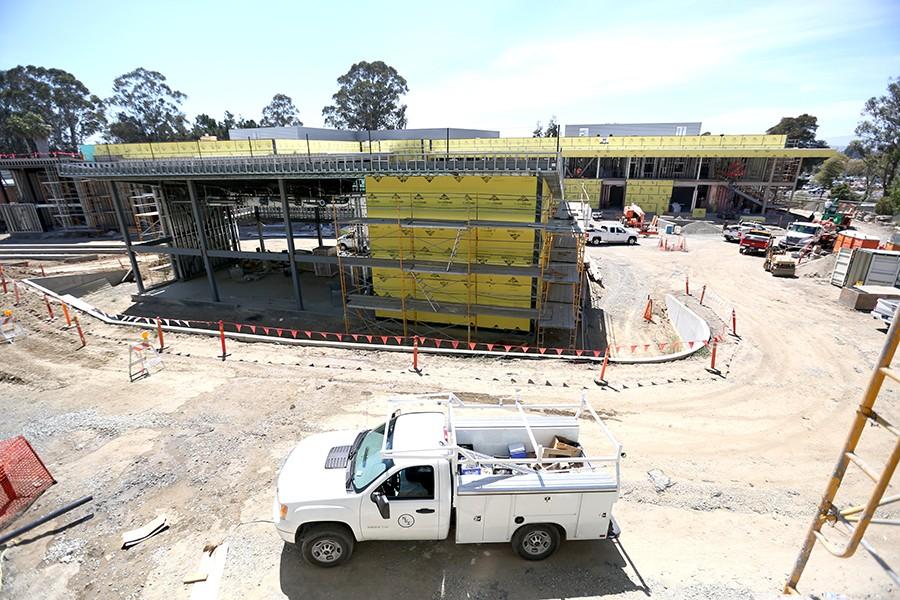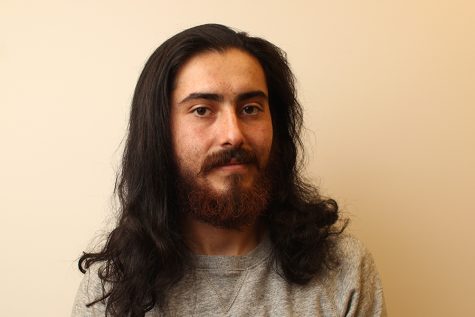Boosting your lot odds
Parking lot, campus entrance projects completion reduce stress
The ongoing Campus Center and Classroom Building project continue after two other parking lot projects aimed at reducing traffic around the college were completed.
Sep 2, 2015
Two parking lot projects along Campus Drive were completed over the summer to reduce traffic amplified by the ongoing Campus Center and Classroom construction project.
Contra Costa College Buildings and Grounds Manager Bruce King said these two projects have added about 90 parking spots for students, 42 for faculty, 12 for people with disabilities and a new road at a major entrance to campus.
Project Manager Ron Johnson of Critical Solutions Inc., a management firm from Walnut Creek, said the campus entrance remodel and the Hillside Stabilization project to Lots 16 and 17 cost the Contra Costa Community College District $1.3 million and $670,000, respectively.
King said the more expensive project over the summer was configuring and paving a permanent two-way road and drop-off/ pick-up area in between the Student Services Center and the Gymnasium, along with adding 50 new student parking spots between Lots 1 and 2 combined, 42 spots for faculty in Lot 3 and 12 spots for people with disabilities in Lot 7.
Johnson said the Ghillotti Bros., a subcontractor to general contractor Lathrop Construction, was hired to do the work for $650,000.
Before construction to the entrance began, King said students entering campus at the Bus Transfer Center trying to get across campus and onto Library Drive or Castro Road would have to get through a “maze” of hairpin turns.
“Watching students trying to drive through the parking lots in the past was like watching a swarm of mice trying to get through a cramped maze to get the cheese,” he said. “But now the new road (and drop-off area) is much wider and gives students a straight shot to Castro Road from Campus Drive.”
But another project worked on during the summer will provide “tremendous” relief for students scrambling to find parking, he said.
Since the completion of the less expensive Hillside Stabilization Project on Aug. 20, King said students using Campus Drive now have the option to drive further up the hill and use the 40 student-only parking spots in Lot 16.
He said students having to cope with traffic because of the Campus Center project make these two summer projects “a long time coming” for students.
But because Lots 16 and 17 are closer to buildings with active classes, this project is a milestone in terms of helping students find parking until the ongoing construction is completed.
Interim President Mojdeh Mehdizadeh said that unlike the campus entrance remodel, which was part of the original Campus Center and Classroom Building project design and budget, the Hillside Stabilization project is a separate project funded partially by 2006 Measure A and recently passed Measure E bond monies.
King, however, said all this work over the summer is to help students get to the “academic cheese” easier until the Campus Center project is completed in fall 2016.
Paving ahead of schedule
Mehdizadeh said the remodel to the west entrance roadway and parking lots was included in the original Campus Center project design and budget, but it was scheduled to begin next summer.
After discussions with district planners, CS project managers, designers and a member of the operations council in early March, however, Mehdizadeh said they decided to expedite the destruction of “the maze” to happen over the summer.
She said the original date for the remodel conflicted with the date that furniture, utility fixtures and electronic equipment would be brought into and rigged throughout the three “structurally complete” buildings starting in April 2016 and spilling into the summer.
Having both projects happening simultaneously would increase the number of construction workers on campus, resulting in having to provide them with designated parking somewhere on campus, she said.
“So, to reduce the number of students affected by the construction, we decided start the (parking Lot 1 remodel) project early rather than disturb students. This was an important factor in our decision,” she said. “We want students to have access to parking as quick as possible.”
Police Services Lt. Jose Oliveira said construction workers are not allowed to park anywhere else but the designated spots in the Parking Annex and along Moraga Road or risk violating the contract with the college.
Oliveira said as of last week, if a construction worker were to park anywhere but the designated spot, they would not only be ticketed, but a complaint will be sent to their project manager.
“These designated spots, however, should not impact student parking because they get here earlier than most students and their designated parking is not close to classrooms in use,” he said. “But to tell you the truth—an officer wouldn’t be able tell the difference between a student’s car and construction worker’s car unless it has a logo or it’s obviously a work truck.”
Recently, Mehdizadeh said she had important discussions with a member from the Operations Council and project planners about how the new parking spaces should be allocated between faculty and students.
She said they came to the decision that students will be designated to park in Lots 1 and 2, which will be the closest lots once the Campus Center project is complete, and faculty have to park in an extension to Lot 3, just behind the two student-only parking lots.
“We are very much in support for students to have the spots closest to the new buildings,” she said. “Faculty will have to park further back.”
District Facilities Planner Ray Pyle said the remodel to the entrance of campus began on May 21 and all but the landscaping was completed by Aug. 10.
Stabilizing unstable parking
King said the re-opening of student-only parking Lot 16 comes at a convenient time because most classrooms in use during the Campus Center project are easier to access from there.
Parking Lots 16 and 17 are terraced on the hillside behind the Art Building along Campus Drive and have been closed and slated for a retrofit for about three years, King said.
Pyle said the parking lots were shut down when a sinkhole was discovered in between the lots after visible surface upheaval and cracks prompted the college shut them down to avoid student injury or property damage.
He said Engineering Soils Repair drove 900 non-displacement steel sections called “Plate Pile elements” into the hillside to stabilize the downslope forces and prevent the hill from sliding.
Mehdizadeh, however, said the completion of the Hillside Stabilization project had nothing to do with the influx of construction workers caused by the ongoing Campus Center project.
King said the project began in early December and was completed on Aug. 20.



